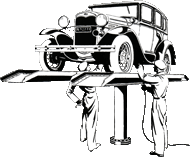
Model A & B & Model 46
Ford Garage
Camshaft Gear Front Timing Cover Differences
The following pics show each of the major styles of camshaft gear front timing covers used from 1928 to 1934 (and beyond), and a comparison pic of all of them in order to the show variation in generator position.
Shown directly below is a rare timing cover without the timing pin hole. This cover was used on some very early Canadian built export models. The engine was timed through a hole in the flywheel housing. Also note the unusual rear motor mount. The pics below were provided by Justin Bicknell of New Zealand, and are from his early Canadian engine number ☆CA 67☆.

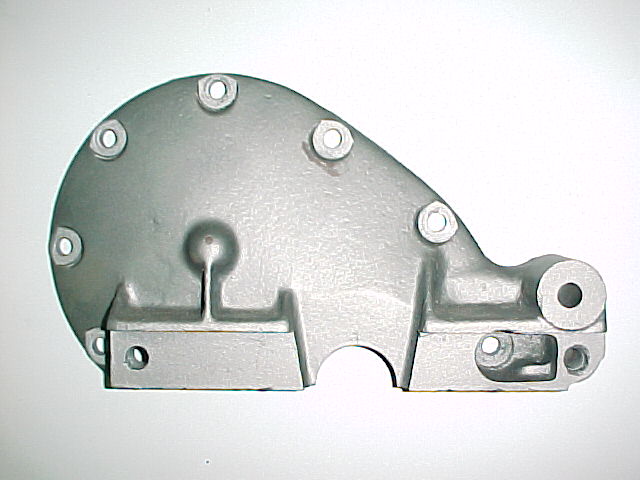 fordgarage.com
fordgarage.comPhoto courtesy of Justin Bicknell

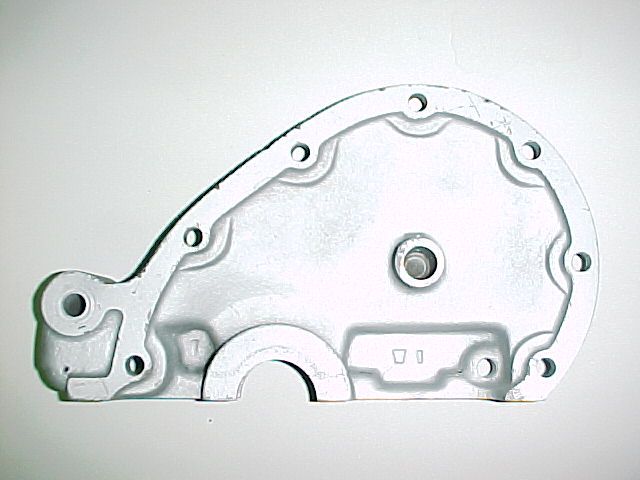 fordgarage.com
fordgarage.comPhoto courtesy of Justin Bicknell

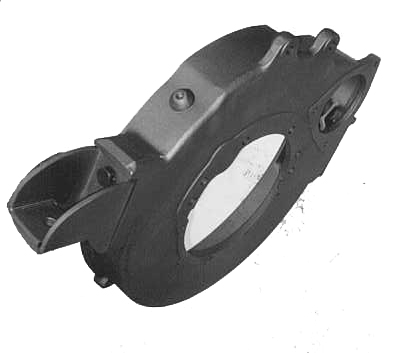 fordgarage.com
fordgarage.comPhoto courtesy of Justin Bicknell

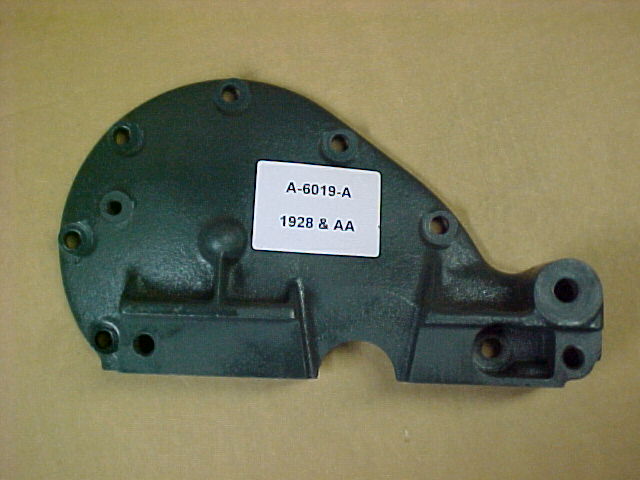 fordgarage.com
fordgarage.comModel A 1928
Pictured above is the A-6019-A cover which was used in 1928 where the engine was mounted directly to the rear flange of the frame front cross-member. Some of the very earliest of these covers used a 7/16 inch generator mounting bolt. Subsequent ones used a 1/2 inch bolt.
Also note the machined surface and lip for supporting the casting on the frame flange. This is also the only cover which was spot face machined at the block attaching bolt holes. Subsequent covers were just a 'close enough' as-cast surface under the bolt and washer.
The timing pin hole in the Model A covers correspond to TDC (zero crankshaft degrees) on the number one piston.

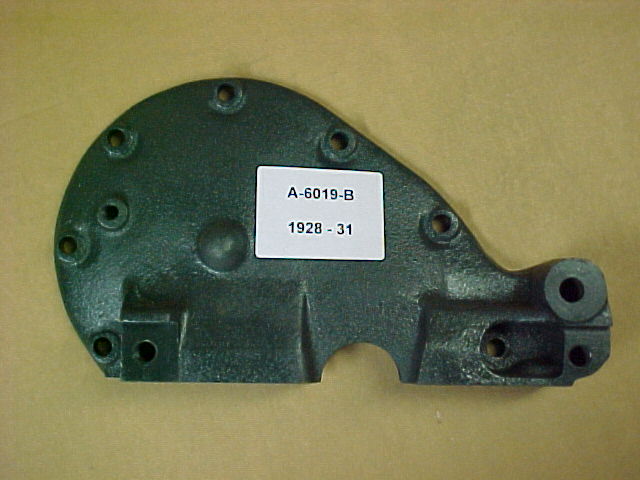 fordgarage.com
fordgarage.comModel A 1929-31
Pictured above is the typical A-6019-B cover which was used through out Model A production with the front flexible motor mount. Note the revised casting ears which only bear on the tops of the motor mount. The mounting holes are on 9 inch centers.

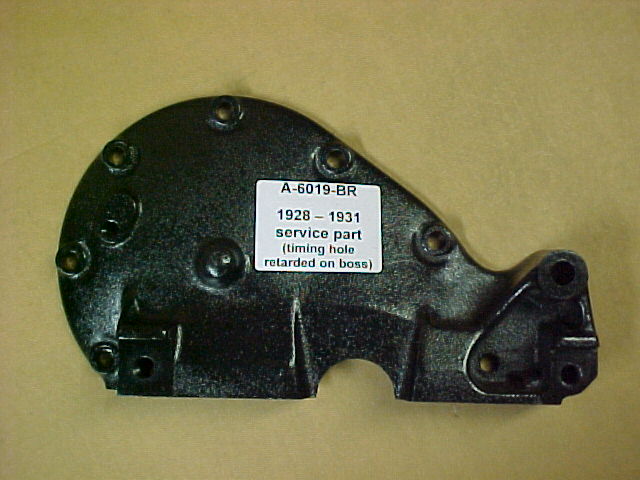 fordgarage.com
fordgarage.comModel A Post-Production Service
Pictured above is the somewhat unusual A-6019-BR cover which was supplied to service for Model A's after 1932 Model B production began. Ford created a new casting with a revised generator mounting location and an elongated boss for the timing pin hole.
This casting was used to make both Model A and Model B part number covers (having timing pin holes in different locations on the boss). This cover pictured above was for post-1931 service use, and was not used on original production Model A's.
In this design, the generator was moved upward and slightly farther from crankshaft centerline to accommodate the Model B front lower water hose.
The timing pin hole could be drilled in the standard Model A position (low) on the boss as this one is, or in the advanced position (high) on the boss to accommodate the Model B distributor.

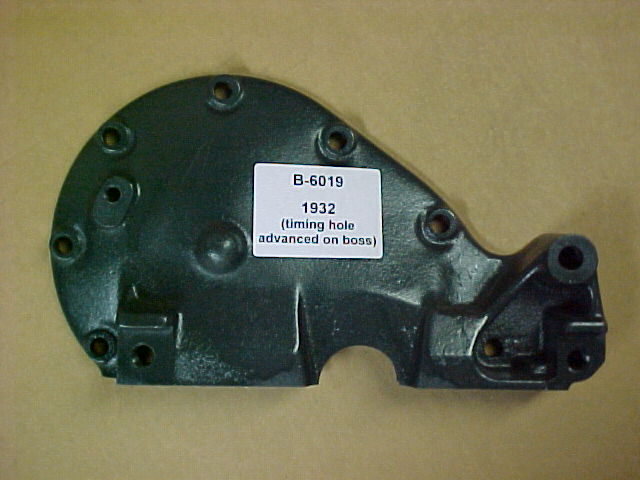 fordgarage.com
fordgarage.comModel B 1932
Pictured above is the 1932 Model B cover B-6019. It is identical to the Model A (service) cover, except the B-6019 cover has the timing pin hole in the advanced position on the boss. The timing pin hole in the Model B cover corresponds to 19 crankshaft degrees (9-1/2 camshaft degrees) BTDC on the number one piston.
German Ford Köln G28T 1942-58

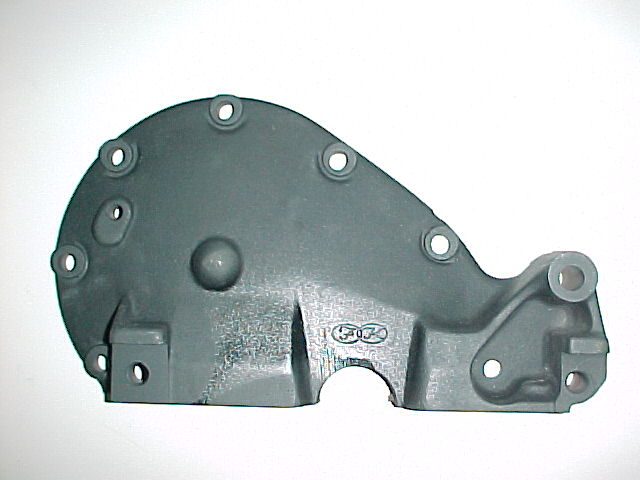 fordgarage.com
fordgarage.comPhoto courtesy of Justin Bicknell
The cover used on the German Ford-Köln 1942-58 vintage G28T engine was similar to the Model B cover shown above but also had the FK logo cast in.


The G28T cover is identified by the cast-in Ford Köln logo, pictured above, which is visible on the outside of the cover above the crankshaft nose. Ford Köln was the plant in Germany (Köln) where the G28T improved B engine was produced in the 1940s and 1950s. The regular European Ford Model B engine was produced at both Dagenham, England and Köln, Germany in the 1930s.

 fordgarage.com
fordgarage.comPhoto courtesy of Justin Bicknell
Note that the FK cover also had a part number of B-6049 cast in, rather than B-6019.

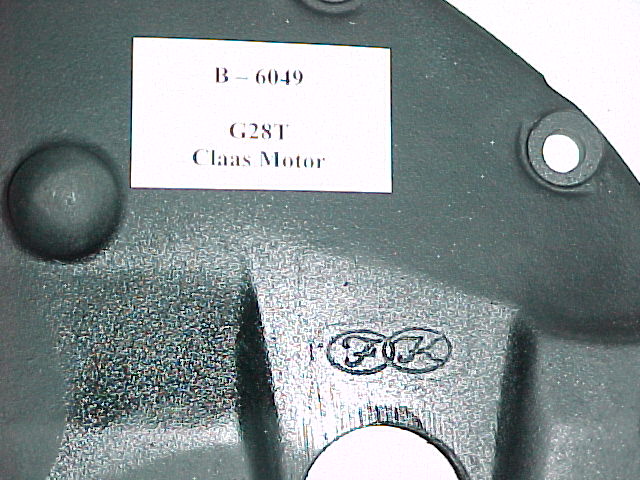 fordgarage.com
fordgarage.comPhoto courtesy of Justin Bicknell
The photos above supplied by Justin Bicknell are from a 1950's era Claas Mähdrescher combine engine. Claas combines were exported from Germany to New Zealand, and used G28T engines for power. G28T engines were used in German Ford FK3000 BB trucks until 1955, and in Claas combines from 1948-54, and possibly until 1958 when G28T engine production ended.

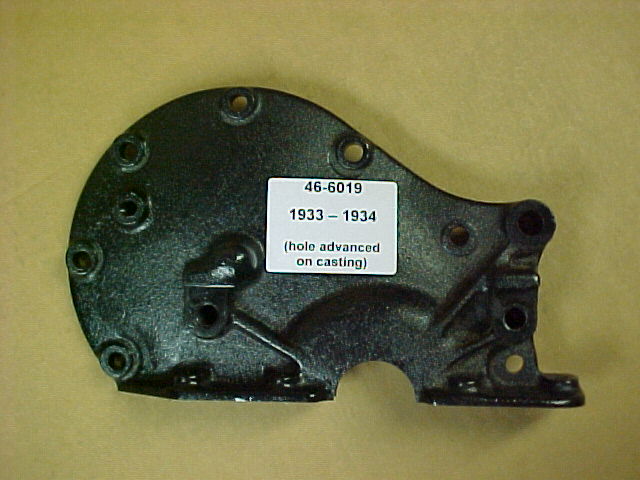 fordgarage.com
fordgarage.comModel 40/46 1933-34
Pictured above is the 1933-34 timing cover 46-6019 as used on 4 cylinder Model 40 and 46 passenger and commercial vehicles. This cover has the timing pin hole in the same 19 crankshaft degrees BTDC advanced position as a Model B, but the hole is not on an elongated boss. This cover also has the front motor mount bolt holes moved closer in towards center, on 6-3/8 inch hole spacing.
Most notably, the generator mounting boss is moved considerably upward and rearward. This was done to offset the generator rearward in conjunction with the short Model 46 (Model B style) water pump, and the short flat crankshaft pulley.
The purpose of the short water pump was to shorten the overall engine length to provide enough fan clearance to the Model 40/46 radiator, which was laid back at an angle on the 1933-34 Model 40/46 Fords.

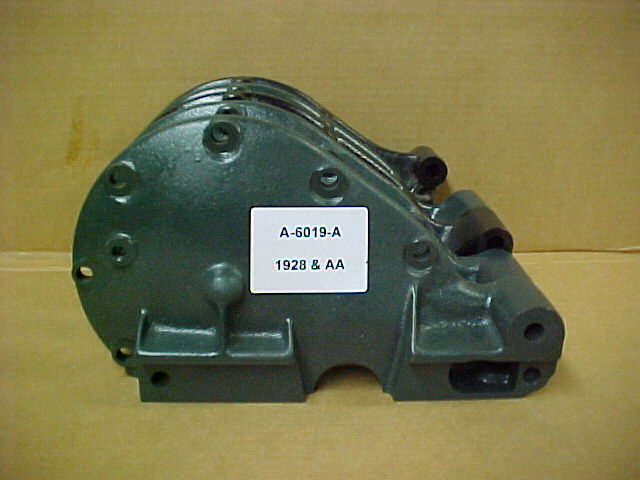 fordgarage.com
fordgarage.comFinal Considerations:
This last pic (above) is a front view of the earliest through newest covers to illustrate the relative differences in the generator mounting positions.
In some respects, the A-6019-BR service cover (middle one above) might be the most convenient to have on a Model A since it puts the generator up higher away from the lower water hose. I have seen a number of generator brackets cutting into the lower hose on Model A's, and it is also difficult to reach the generator mounting bolt for service with the original covers.
Model B Ignition Distributor Timing:
The Model A service timing cover (A-6019-BR with the timing pin hole at the bottom of the elongated boss) is not really compatible for use with the Model B distributor even though it physically resembles a Model B timing cover casting.
Proper initial ignition timing of a Model B distributor will not be achieved when timed "by the book" and using the wrong timing cover.
The Model B distributor is intended to be timed only using the Model B timing cover (B-6019, which has the timing pin hole location at the top of the boss, which is advanced 9-1/2 camshaft degrees relative to the Model A cover pin location).
Improper (Model A) timing cover usage with a Model B distributor results in retarded spark timing and loss of power and reduced top speed.
It might be a good idea to double check your cover if you are running a Model B distributor and think you have a Model B cover. It is possible you might have the Model A service cover with the timing pin hole at the bottom of the elongated boss, rather than at the top position (Model B).
Timing Pin Position Confirmation:
There has been some online speculation whether the 9.5 degree timing pin hole location difference between the Model A cover and the Model B/40/46 cover published by Ford might possibly be a misprint in the Service Bulletins.
I made a comparative measurement of the timing pin location on the Model A front timing cover compared to the Model B & 46 timing cover and confirmed that the Model B timing pin hole is 9.5 camshaft degrees advanced from the Model A timing pin hole location (which is at #1 piston TDC). This agrees with the figure published by Ford.

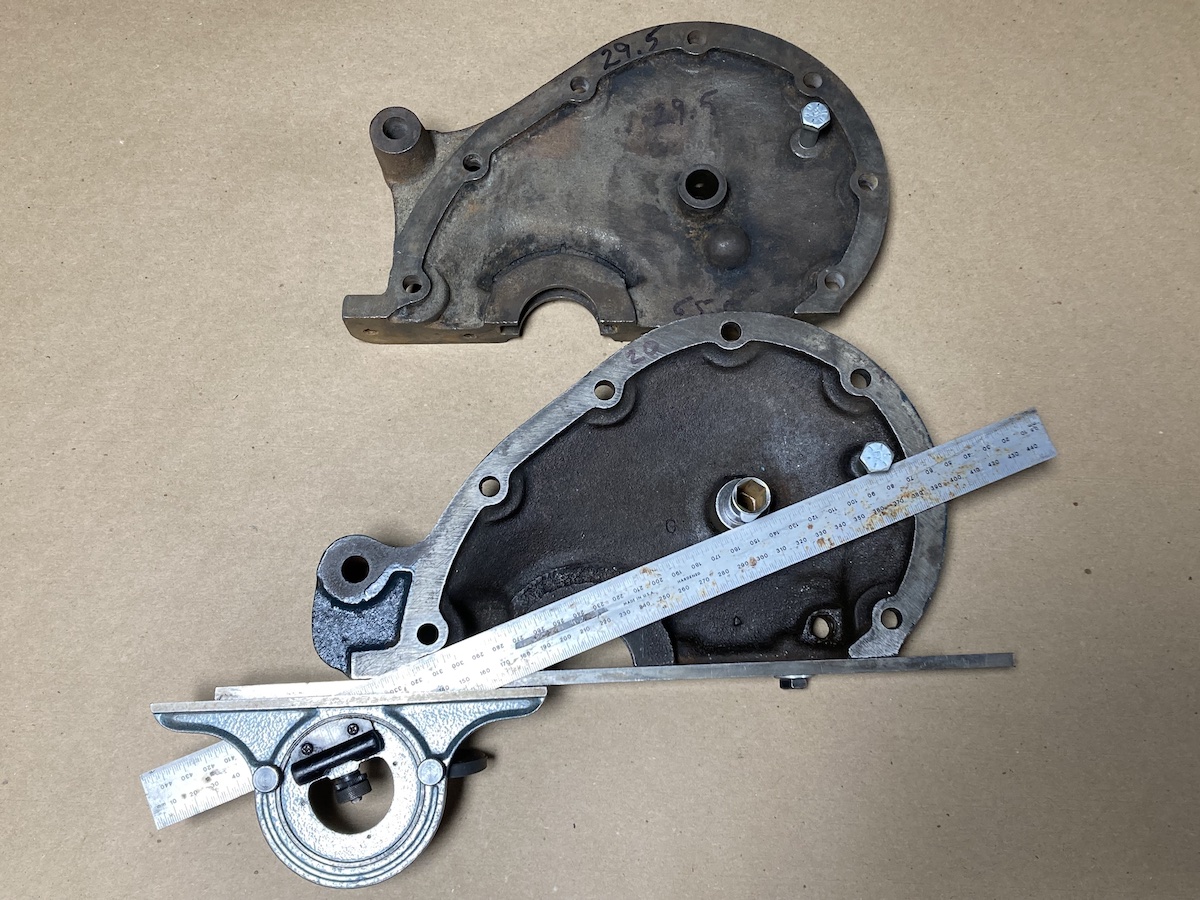 fordgarage.com
fordgarage.comI performed this comparative difference measurement in a very simple straightforward manner using a machinist’s protractor, a plain shank bolt screwed in the timing pin hole from the inside, and a Craftsman socket which was a very tight slip fit in the cam plunger bore, much tighter than even the original plungers.
I used a long flat ground HSS 1/4” spacer on the oil pan gasket surface to provide a long smooth offset plane for the protractor head surface to bear against.
I slightly loosened the two protractor head knobs and the sliding scale knob.
I then netted the scale against both the bolt shank and the socket, as well as netting the protractor head against the HSS spacer.
When everything was simultaneously netted, I carefully tightened the protractor knobs and the scale knob.
I then turned the protractor over and recorded the reference angle reading.
To be clear, the reading indicated on the protractor has nothing at all to do explicitly with TDC or any aspect of the Model A engine itself.
The reading is just a comparative measurement technique to get a reading from timing cover part features which can then be compared to similar readings from other covers. This technique has nothing to do with the actual location of the crankshaft or piston position. It is also accepted on faith from Ford that the Model A timing pin location correlates to #1 cylinder TDC.

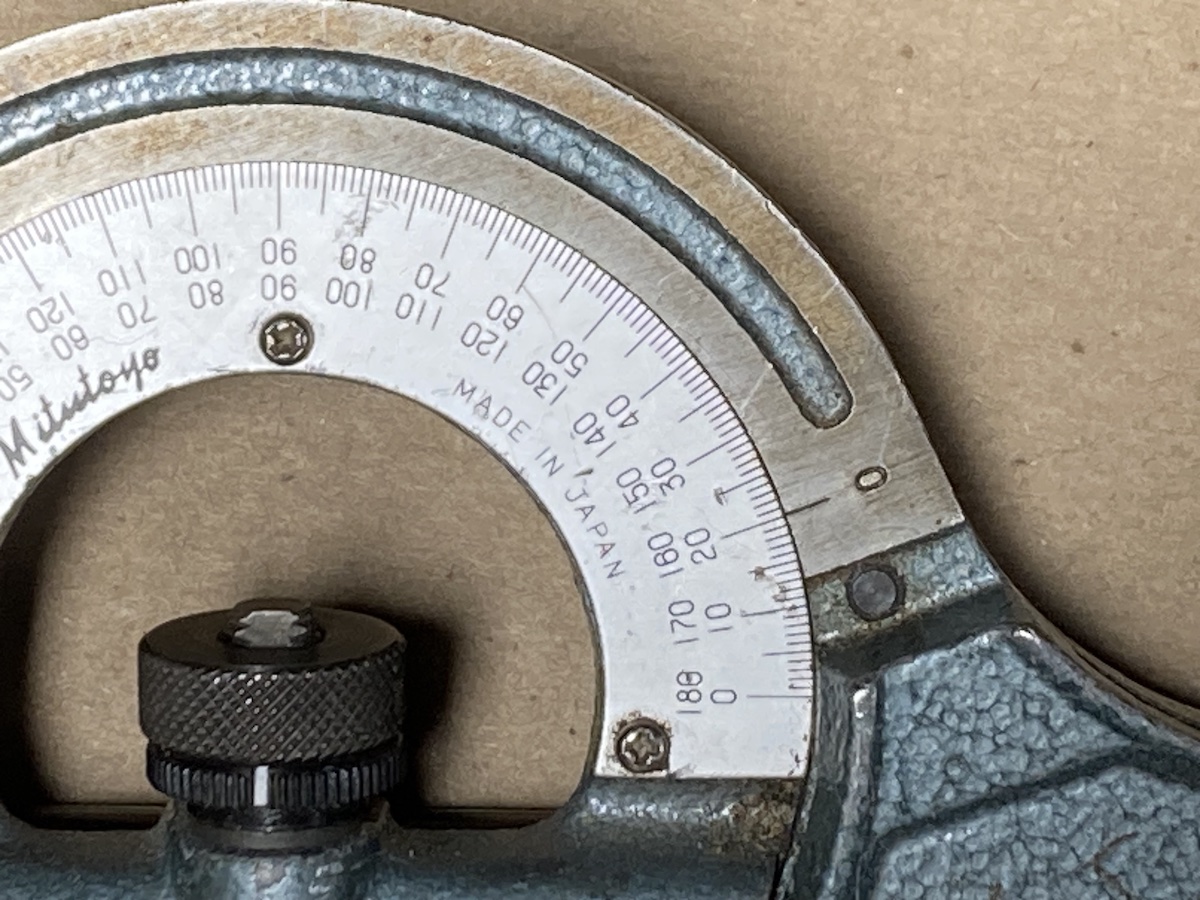 fordgarage.com
fordgarage.comThe Model B/46 cover measured “29.5 degrees”.
The “20 degree” and “29.5 degree” readings on the protractor have no specific meaning or relevance to any aspect of the Model A engine operation itself.
The difference in measurements (29.5 - 20 = 9.5) demonstrates that the Model B/46 timing pin hole location is 9.5 (camshaft) degrees advanced from the Model A hole location. This agrees with, and confirms, the angle difference published by Ford in the Service Bulletins.
This measurement method only considers the orbit of the timing pin hole about the axis of the camshaft, and references a common planar surface (the oil pan gasket plane).
Additionally, this measurement technique only involves a single part, the front casting. By using this technique, one can accurately determine the relative difference in angular position of the timing pin hole on two different castings.
The method is accurate and is not geometrically compromised by measuring off of tangent points on the OD of the bolt shank and the OD of the socket (versus measuring on virtual centers), and is not compromised by the bolt shank movement on an arc to a different distance from the pan gasket plane.
More related information on Ford Garage:
- For more Model A & B related information, use the Site Search box at the top or bottom of this page.
- Model A & B Camshaft to Crankshaft Gear Alignment
- Model B & Model 46 Distributor Design Details
- Model B & Model 46 Distributor Advance Operation
- Model B & Model 46 Pertronix Ignitor Ignition Installation and Timing
- Model A & B Camshaft Thrust Plunger
- Model A & B Engine Cam/Valve and Ignition/Spark Timing Discussion
Vince Falter
January 2002

